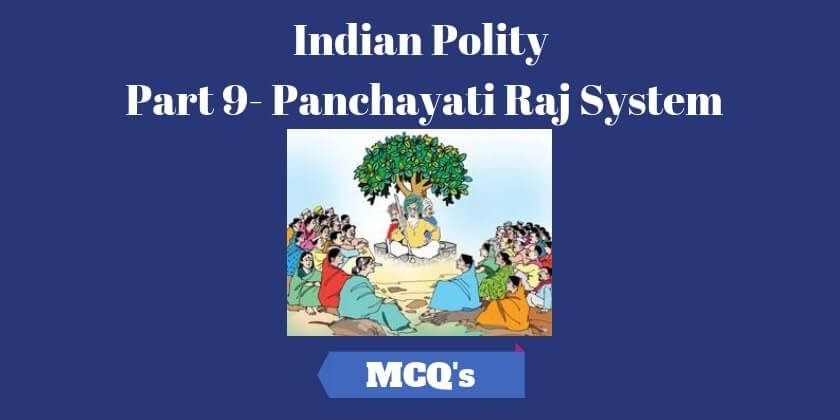21. A person to be qualified for standing in a panchayat election must have attained the age of:
A. 21 years
B. 18 years
C. 25 years
D. 30 years
Click to show/hide
22. The elections to Panchayats are to be held:
A. Every four years
B. Every five years
C. When the State Government decides to do so
D. At the Centres directive
Click to show/hide
23. Father of local self-government in India is :
A. Lord Mayo
B. Acharya Vinoba Bhave
C. Lord Ripon
D. Mahatma Gandhi
Click to show/hide
24. Which of the following is not a source of revenue to the Village Panchayats?
A. Property-Tax
B. House Tax
C. Land Tax
D. Vehicles Tax
Click to show/hide
25. Every Village Panchayat is headed by a Sarpanch who is elected by:
A. Gram Sabha
B. Members of Village Panchayat from among citizens of the village
C. Members of Village Panchayat from among themselves
D. Not elected but nominated by Collector
Click to show/hide
26. Which one of the following Articles of the Constitution of India makes specific mention of Village Panchayats?
A. Article 19
B. Article 21
C. Article 40
D. Article 246
Click to show/hide
Explanation: Article40 in 1949 Organisation of village panchayats The State shall take steps to organize village panchayats and endow them with such powers and authority as may be necessary to enable them to function as units of self-government.
27. Which one of the following Amendments of the Constitution of India deals with the issue of strengthening of the Panchayati Raj?
A. 42nd
B. 44th
C. 73rd
D. 86th
Click to show/hide
28. In which part of the Constitution Is the State enjoined to establish Panchayati Raj institutions?
A. Directive Principles
B. Fundamental Rights
C. Preamble
D. Seventh Schedule
Click to show/hide
29. Which schedule was added to the constitution by the 73rd Constitutional Amendment?
A. 6th
B. 7th
C. 9th
D. 11th
Click to show/hide
30. How many posts are reserved for women at all levels in the Panchayati Raj system?
A. 1/3
B. 1/2
C. 2/3
D. 1/4
Click to show/hide
Explanation: Article 243 D of the Constitution, 1/3rd of the Seats of Panchayati Raj are reserved for women.
The following states have made legal provision for 50% reservation for women among members and Sarpanches: Andhra Pradesh, Bihar, Chhattisgarh, Jharkhand, Kerala, Maharashtra, Orissa, Rajasthan, Tripura and Uttarakhand.

